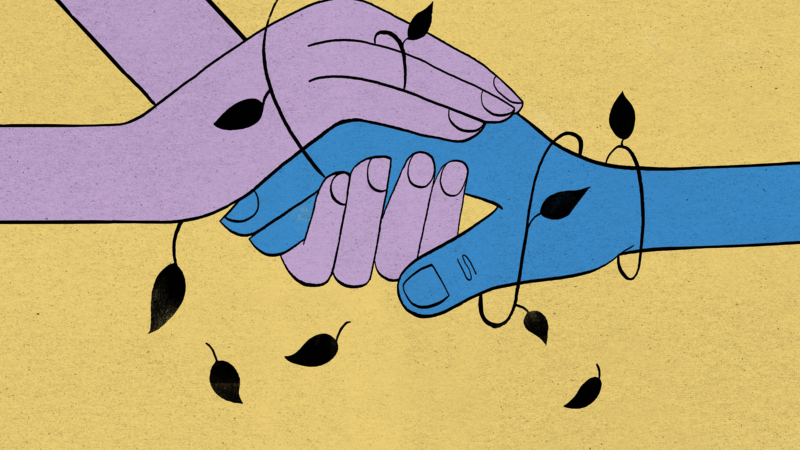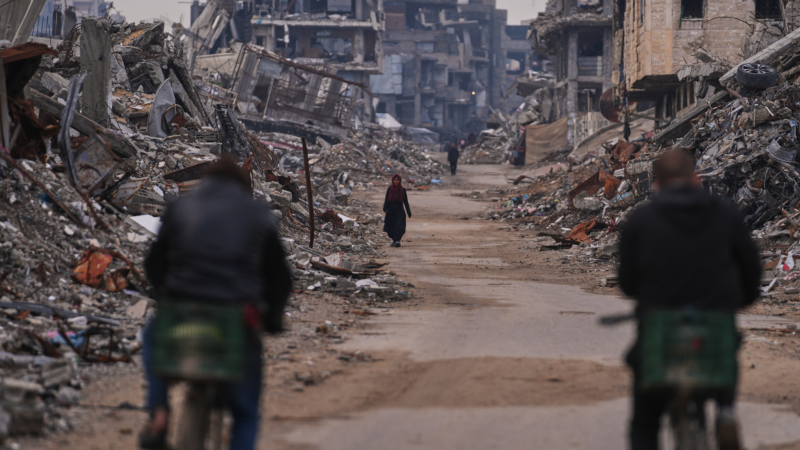Alabama and the Oil Spill: Marketing Seafood
It’s been almost a year since millions of barrels of oil spilled into the Gulf of Mexico. If you’re still a little leery about eating seafood from the gulf, you’re not alone. One study found about 70% of consumers nationwide are concerned about seafood safety. Almost a quarter have reduced how much they eat. Alabama’s seafood industry says the catch has been tested and is safe. But as WBHM’s Andrew Yeager reports getting that message out isn’t easy.
Chris Nelson knows the seafood industry. He’s vice president of Bon Secour Fisheries. He’s the fourth generation of this family owned operation. Here at the plant in Bon Secour, Alabama, oysters come off trucks, 100 pound sacks at a time.
“We would dump ’em out of this sack through this process washer here, washes that mud and grit off the outside of the oyster.”
The washed oysters tumble along a conveyor belt and drop into boxes for shipping.
Nelson says the company’s oyster sales are down about 60% from before the spill. Shrimp sales still down by half. A turnaround depends on people buying seafood again. Those people may have visions of oil drenched sea life.
“The overall consumer perception of our products is apparently far worse than we ever thought it might be and it has been longer lasting.”
The Alabama Seafood Marketing Commission hopes to change that. Governor Robert Bentley created this new board in March. It was one of many recommendations to come from a coastal recovery commission prompted by the oil spill. We’ll get back to this new office in a moment, but first, convincing a skeptical public of seafood safety takes strategy.
“They should always put the public safety and health first. Otherwise it’ll create backfire.”
Sora Kim is a public relations professor at the University of Florida. She says gulf coast seafood marketers need to offer information to reduce uncertainty. And the information must be transparency. So don’t just cite government regulators giving the “all clear.” Show how the seafood was tested. Show how it’s been determined to be safe. Above all, don’t stage a media stunt.
Kim points to former British Agriculture Minister John Gummer. At the height of fears over mad cow disease in 1990, Gummer publicly ate hamburgers with his 4-year-old daughter. Except those half eaten hamburgers in photographs were actually bitten by a staffer. Kim says Gummer was criticized not just for staging the event, but some thought he put his daughter at risk.
“So the problem was people were not ready for accepting that beef was safe to eat at the time.”
But let’s say we’ve got that credible and transparent message and a receptive public. You’ve still got to get that message out.
Alabama does have an existing seafood promotion organization, albeit very small if you’re thinking of a “Beef, It’s What’s for Dinner” kind of marketing. The Eat Wild Alabama Shrimp campaign has just two full-time employees. Staff and volunteers mostly market shrimp through cooking demonstrations at festivals around the state. The campaign is limited too because it’s industry funded. So when shrimpers’ pocketbooks suffer, the campaign does too.
Drift down to Louisiana and it’s a far different story.
“My name is Ewell Smith.”
He’s the executive director of the Louisiana Seafood Promotion and Marketing Board. That state started the office in 1984. It runs on a one million dollar budget between state and federal monies. Although the office will have 30 million dollars over the next three years from BP. Smith says the oil spill is somewhat familiar territory because seafood sales plummeted after Katrina, Rita and other hurricanes.
“A month following Katrina we got a clean bill of health from EPA, FDA and NOAA on our seafood and our water. But it took us about two years to turn that around.”
Besides a timeline of years for recovery, Bon Secour Fisheries Vice President Chris Nelson makes the point, just what is Alabama seafood?
“If I’ve got a boat that is delivering shrimp for me and it’s home ported out of Louisiana and he catches shrimp off of Texas and he lands them here in Alabama, then where are those shrimp from.”
What’s needed, Nelson says, is a regional campaign. The seeds of that are in the Gulf Seafood Marketing Coalition. The organization just started last month, backed with federal money. It’s tasked with coordinating seafood marketing between the five gulf coast states, the industry, restaurants and retailers. A former member of Florida’s seafood promotion office is leading the coalition, but no specific plans yet.
So turning back to the Alabama Seafood Marketing Commission, it’s in a similar position. The governor created the organization, but no board members yet. No specific plans. But it does mean this; as a post-spill, regional marketing effort kicks off, Alabama now has a direct way to be at the table.
An escalation in Yemen threatens to reignite civil war and widen tensions in the Gulf
Saudi Arabia bombed Yemen's port city of Mukalla, targeting a shipment of weapons from the United Arab Emirates for separatist forces. The UAE later said it would withdraw its forces from Yemen.
What being around death taught this hospital chaplain about life
J.S. Park helps patients and their families cope with death every day as a hospital chaplain. He explains what to expect as a person is dying, and how to reckon with uncomfortable feelings about death.
Israel says it will bar aid groups, including Doctors Without Borders, from Gaza
Israel accused Doctors Without Borders, one of the largest health organizations operating in Gaza, of failing to clarify the roles of some staff that Israel accused of cooperation with militants.
China flexes blockade capabilities near Taiwan on second day of military drills
China's People's Liberation Army is staging a second day of large-scale military drills around Taiwan. It's unleashing live-fire exercises as part of what it calls "Justice Mission 2025."
Policy relief for family caregivers seems stalled out. But there are signs of change
Family members carry the burden and costs of caring for America's aging population. Federal policy change is slow to come but a new movement and state actions are building momentum.
Federal appeals court judge is accused of bullying her clerks
The Legal Accountability Project complaint, which has not been previously reported, states that it is based on conversations with multiple former law clerks.







